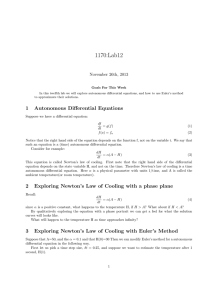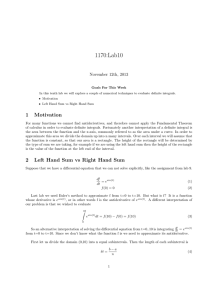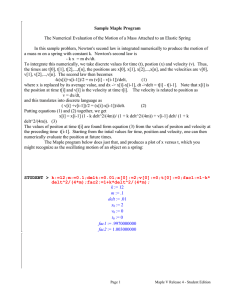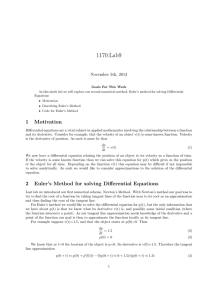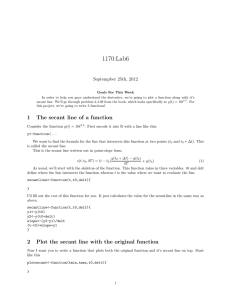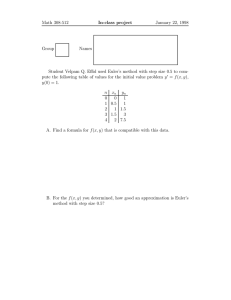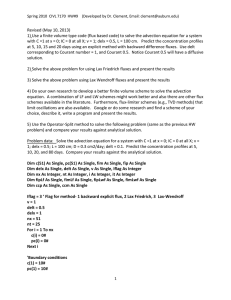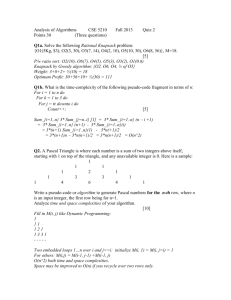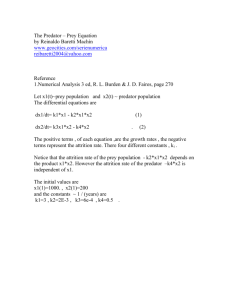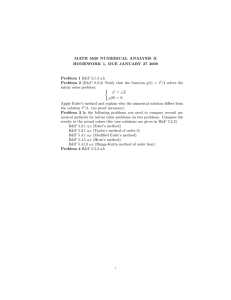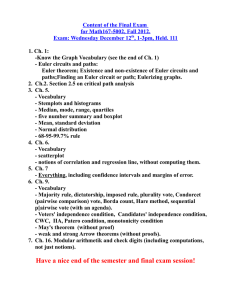1170:Lab11 November 19th, 2013
advertisement
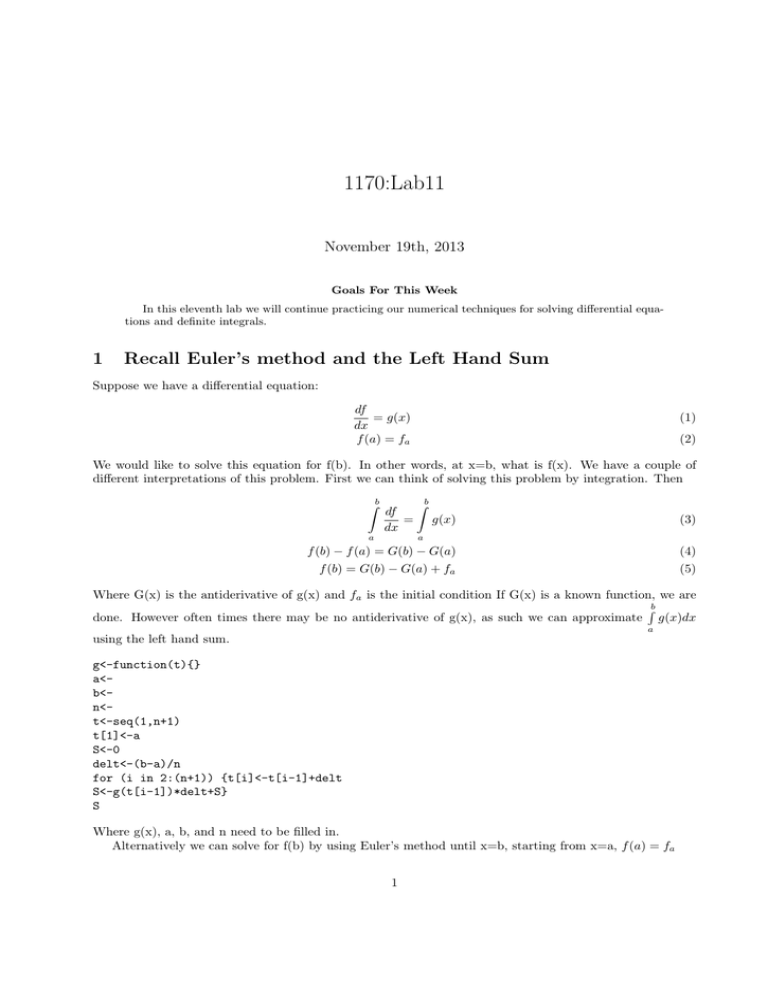
1170:Lab11
November 19th, 2013
Goals For This Week
In this eleventh lab we will continue practicing our numerical techniques for solving differential equations and definite integrals.
1
Recall Euler’s method and the Left Hand Sum
Suppose we have a differential equation:
df
= g(x)
dx
f (a) = fa
(1)
(2)
We would like to solve this equation for f(b). In other words, at x=b, what is f(x). We have a couple of
different interpretations of this problem. First we can think of solving this problem by integration. Then
Zb
df
=
dx
Zb
g(x)
(3)
f (b) − f (a) = G(b) − G(a)
(4)
f (b) = G(b) − G(a) + fa
(5)
a
a
Where G(x) is the antiderivative of g(x) and fa is the initial condition If G(x) is a known function, we are
Rb
done. However often times there may be no antiderivative of g(x), as such we can approximate g(x)dx
a
using the left hand sum.
g<-function(t){}
a<b<n<t<-seq(1,n+1)
t[1]<-a
S<-0
delt<-(b-a)/n
for (i in 2:(n+1)) {t[i]<-t[i-1]+delt
S<-g(t[i-1])*delt+S}
S
Where g(x), a, b, and n need to be filled in.
Alternatively we can solve for f(b) by using Euler’s method until x=b, starting from x=a, f (a) = fa
1
g<-function(t){}
a<b<n<t<-seq(1,n)
f<-seq(1,n)
t[1]<-a
f[1]<delt<-(b-a)/n
for (i in 2:(n+1)) {t[i]<-t[i-1]+delt
f[i]<-g(t[i-1])*delt+f[i-1]}
plot(t,f,type=’l’)
Where we need to fill in for a, b, n, g(x), and f [1] = fa
2
Assignment for this week
1. Problem 53 on page 377 in the text. Growth rates of insects depend on the temperature T. Suppose
that the length of an insect follows the differential equation:
dL
= 0.001T (t)
dt
(6)
With t measured in days starting from January 1st and T measured in degrees Celsius. Insects hatch
at an initial length of 0.1 cm. If the equation for T(t) is:
T (t) = 0.001t(365 − t)
(7)
then how big will the insect be if it grows for 30 days starting on January 1st? What about if it starts
growing on June 1st (day 151)?
2. Now suppose that T (t) = 40 − 5.0 ∗ 10(−6) t2 (365 − t). Once again how big will the insect be if it grows
for 30 days starting on January 1st? What about if it starts growing on June 1st (day 151)?
Solve for problem 1 using Euler’s method with an n=10000. Solve problem 2 using the left hand sum
with the same n value.
2
